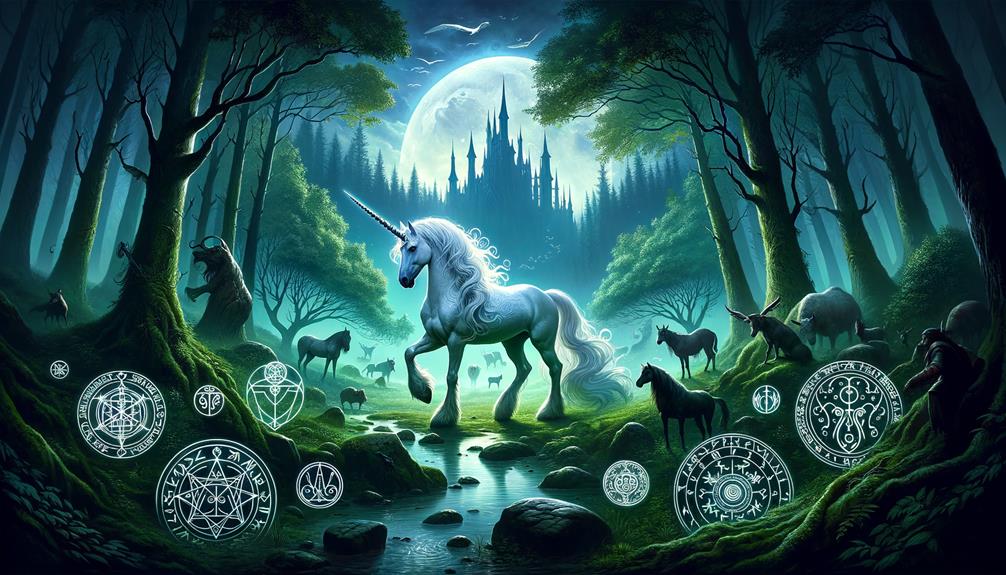As a researcher with years of experience in the realm of mythical creatures, I can confidently say that the unicorn stands out as the most mysterious beast in folklore. These unique, single-horned creatures, known for their purity and healing abilities, have been woven into the history of many civilizations, from ancient Mesopotamia to China. Yet, their true beginnings are as hidden as a pearl in a shell. Could it be that their existence was just a case of mistaken identity, or do they carry a deeper cultural and religious meaning? There's a lot of information yet to be uncovered, and I encourage you to join me as we try to reveal the real story behind these mythical creatures.
Origin of Unicorn Legends

Let's chat about where unicorn legends first sprang up. This fascinating topic takes us on a journey through various ancient societies, where these magical beings are deeply embedded. They pop up in Mesopotamian artwork and play a key role in ancient Indian and Chinese myths. These legendary beings are typically illustrated as a sort of horse or goat with a single horn, known as a unicorn horn, jutting out from their foreheads.
Their story really took off in the medieval times, where they became a symbol of purity and were seen as Christ's embodiment in early Christian interpretations. Marco Polo, the renowned Venetian explorer, even asserted that he came across unicorns during his voyages, although he likened them more to rhinoceroses than the graceful, horse-like beings of myth.
In the past, folks believed the unicorn horn held magical and healing powers, offering protection from diseases and toxins. Its capabilities were thought to cleanse and purify substances, further strengthening the unicorn's link to purity and innocence.
Adding to the intrigue, Scotland chose the unicorn as its national creature, incorporating it into its heraldry, folklore, and cultural displays. The fascination with this legendary creature persists today, symbolizing creativity and optimism in our contemporary culture.
Unicorns in Classical Antiquity
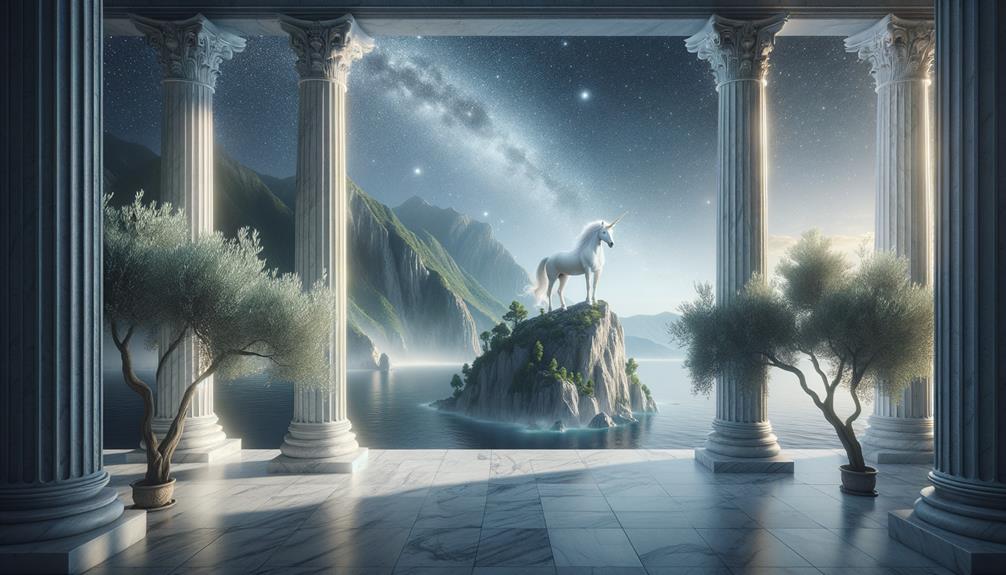
Let's chat about unicorns in Classical Antiquity. They have deep roots in various ancient cultures and played a big part during the era of classical antiquity, showing up prominently in Greek literature and early Christian interpretations. The unicorn was more than just a mythical creature; it symbolized purity, strength, and majesty. It was often connected to Greek deities or heroic figures. The first recorded description of a unicorn was by Ctesias, a chronicler from the fourth century B.C., who described it as a wild Indian ass with a single black horn.
| Unicorns in Classical Antiquity | Greek Mythology | Early Christianity |
|---|---|---|
| First described by Ctesias in the fourth century B.C. | Seen as a symbol of purity and strength | Seen as a representation of Christ |
| Characterized by a single black horn | Connected with deities and heroes | Signified virginity and purity |
| Referred to as the unicorn | Included among mythical creatures | Featured in various artworks |
Even the famous Roman naturalist Pliny the Elder wrote about unicorns, describing them as creatures with spiraling horns. But the unicorn's fame wasn't limited to Greece and Rome. Early Christians also saw the unicorn as a representation of Christ, emphasizing its purity and virginity. This means unicorns in classical antiquity were an integral part of mythical narratives, closely tied to both spiritual beliefs and natural historical accounts.
Heraldic Significance of Unicorns
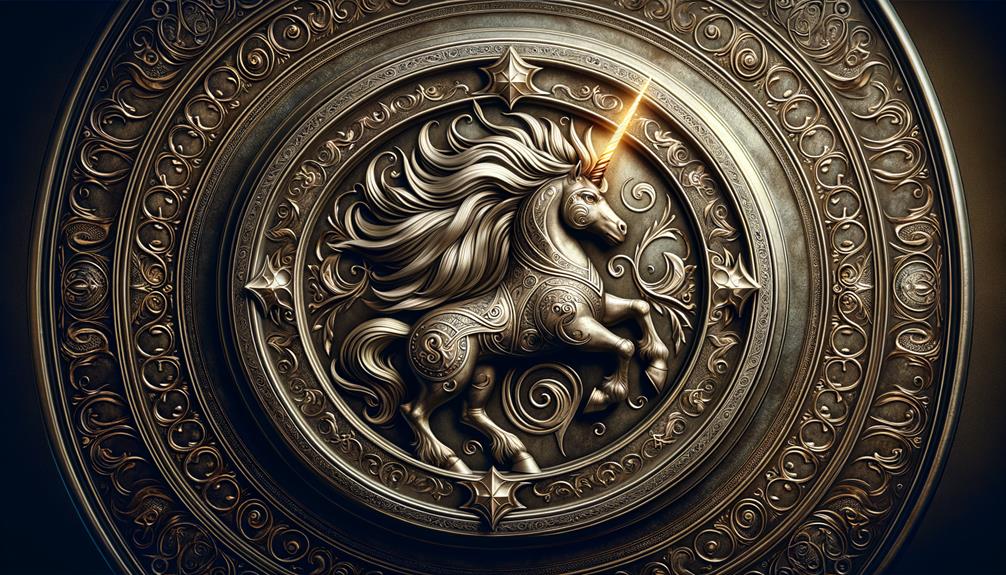
Unicorns have been symbols of many things over the ages, but their role in heraldry, especially in Scotland, is truly something to talk about. When Scotland made the unicorn its national animal, this mythical creature got a serious promotion, becoming a symbol of both strength and purity.
Looking back to the middle ages, unicorns were often shown restrained, as in the well-known 'Unicorn in Captivity' part of the Unicorn tapestries. Some believe this represents the Incarnation, the story of the Virgin Mary becoming pregnant with Jesus, as stated in some interpretations of the Bible.
Here's a few interesting points to consider:
- The unicorn represented purity and grace in olden times, which are traits often linked to the Virgin Mary in medieval artwork.
- According to an ancient Greek bestiary, known as the Physiologus, the horn of a unicorn had the power to purify poisoned water.
- Cups made from unicorn horns were highly sought after, as they were thought to offer protection from poison.
Despite the changes over time, the unicorn's essential symbolism has remained the same. Its spot in heraldry shows us the lasting appeal of this mythical creature, a symbol of purity and strength that never fails to spark our curiosity and wonder.
Unicorn References in Religion
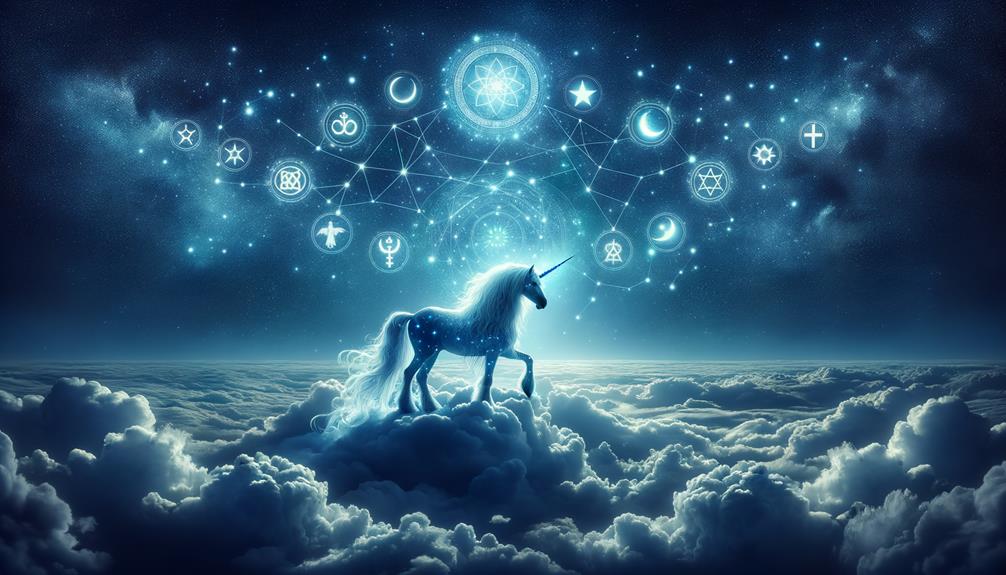
You might not realize it, but the unicorn has a pretty big role in many religious contexts. It's a symbol of strength, purity and salvation. Did you know there are references to unicorns in the King James Version of the Bible? The first time a unicorn-like creature, called re'em, is mentioned, it's described as this strong, horned creature, which sets up the unicorn's reputation for power and majesty.
Christian interpretations from the early days even compared the unicorn to Christ. They saw it as a symbol of salvation for all of humanity, which really boosted the unicorn's symbolic status. People in the middle ages thought unicorns had healing properties. They were especially fond of cups made from unicorn horns, which they believed could protect them from poison. That shows just how much faith they had in the unicorn's purifying powers.
The unicorn's influence isn't just limited to religion, though. It also shows up in art. The Metropolitan Museum of Art in New York City, for instance, has quite a few pieces featuring unicorns. And, get this, the unicorn, which stands for purity and strength, is even the national animal of Scotland. That's a testament to its cultural and religious importance.
Unicorns in Chinese Mythology
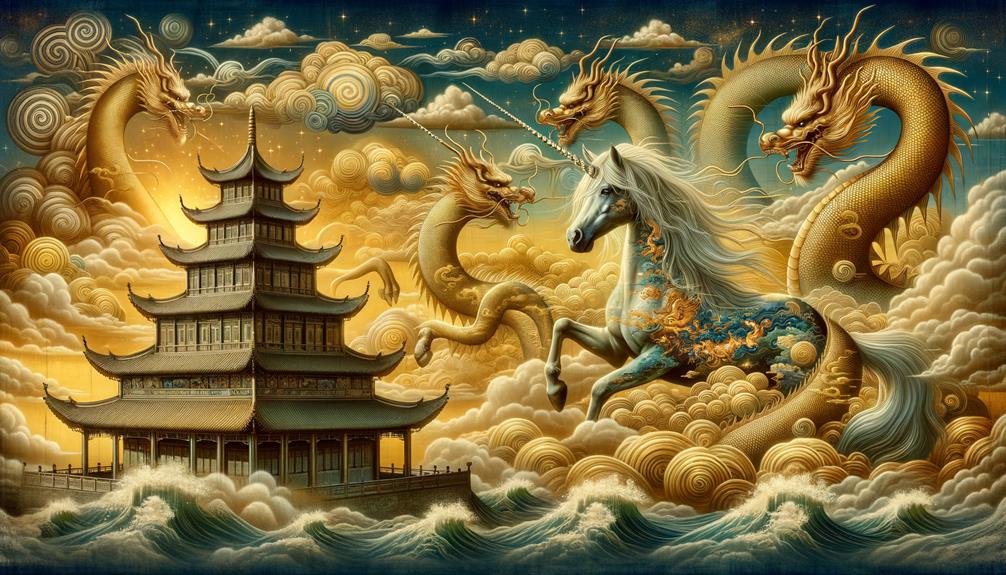
Let's take a journey through time and land in ancient China, around 2700 B.C., where we find mentions of unicorns, or 'qilin', sprinkled throughout their rich mythology. These mythical unicorns have had a lasting impact on the cultural stories passed down through generations. The more we learn about these legendary creatures, the more we realize the qilin is a fascinating and intricate beast.
It's interesting to note how different the Chinese interpretation of unicorns is from what we're used to in Western culture. Picture a qilin with:
- The body of a horse, but it has a goat's tail,
- A stag's head, but it's covered in scales,
- Elephant-like feet.
What's intriguing is that even with its hybrid nature, the qilin is consistently shown with a single horn in the middle of its forehead. The creature is usually white-bodied with blue eyes, exuding an air of enchantment.
The qilin carried great symbolism in Chinese culture and was especially important in the imperial court. It stood for tranquility, wealth, and kindness. Similar to Western unicorns, the qilin's single horn was believed to have healing abilities, which further established its image as a symbol of purity and moral integrity.
Frequently Asked Questions
Has There Been Any Evidence of Unicorns?
I've done quite a bit of digging, yet I haven't found a shred of scientific proof that unicorns ever existed. Their stories are drenched in myth, folklore, and misinterpretations of other creatures. Yes, they're captivating figures in our cultures, but from what we understand, they're just figments of our imagination.
When Did the Myth of Unicorns Start?
Isn't it remarkable how the fable of unicorns sprang from early Mesopotamian artworks and ancient stories from India and China? It's truly intriguing how the tale of this mythical beast has grown and left its mark on diverse cultures over time.
Who Saw the First Unicorn?
When it comes to unicorns, you might be wondering who first laid eyes on this mythical creature. Well, it's a bit of a mystery. However, the first written record we have comes from the Greek historian Ctesias. He wrote about a creature from India with a single horn, which we think might have been an Indian rhinoceros. So, while it's not crystal clear who first 'saw' a unicorn, Ctesias certainly helped kick-start the legend.
What Was the First Sighting of a Unicorn?
So, who was the first to spot a unicorn? Well, that's a bit of a hot potato. Some folks point to ancient Greece, saying it was first described there as a wild donkey sporting a single horn. Then, there are those who argue it showed up first in Mesopotamia, India, or even China.

